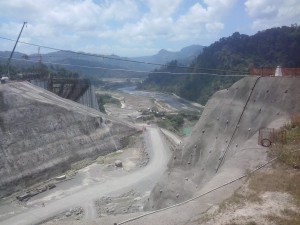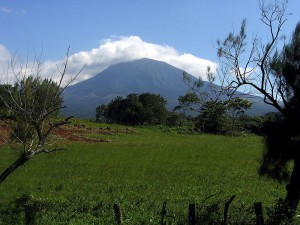By Yardi Blog Staff on August 19, 2015 in Technology
The United Nations predicts that by spring 2024 the world’s population will reach 8 billion. Meeting the energy needs of the world’s ever-growing population is a hot-button issue, especially in the context of finite carbon-based energy sources and the looming danger of irreversible climate change.
While going carbon-neutral can seem like an unachievable goal in its complexity, there are trailblazers whose goals are exactly that: shifting populated environments away from fossil fuel dependency and onto a system of renewable energies. We’ll be taking a look at some the superstars of carbon-neutral environments and renewable energy trailblazers.
Costa Rica
The 2010 winner of the World Future Council’s Future Policy Award, Costa Rica has long been lauded for its environmental conservation and protection initiatives. But the little Latin American country was the focus of intense global acclaim in March 2015 when it announced that it has generated 100 percent of all its electricity from renewable sources for the 75 days straight of the year. The state-run Costa Rican Electricity Council (ICE) released information detailing that it had managed to avoid using any fossil fuels to generate electricity until mid-March by using a combination of biomass, wind, solar, geothermal and most importantly hydroelectric power plants, boosted by heavy rainfall experienced this year. Under normal conditions, C osta Rica already sources 88 percent of its electricity from renewable sources. Hydroelectric plants provide 68 percent of Costa Rica’s electricity followed by geothermal plants with a 15 percent share, wind farms provide 5 percent, biomass sources under one percent and solar chips in with 0.1 percent.
osta Rica already sources 88 percent of its electricity from renewable sources. Hydroelectric plants provide 68 percent of Costa Rica’s electricity followed by geothermal plants with a 15 percent share, wind farms provide 5 percent, biomass sources under one percent and solar chips in with 0.1 percent.
Carbon-zero 2021
The Central American country plans to further expand its renewable power plant infrastructure in a bid to achieve carbon neutrality by 2021, as pledged six years ago. 100 megawatts worth of wind warms and 40 megawatts of small-scale hydroelectric plants were announced to complete by the end of 2015. This will be completed by the Reventazón hydroelectric project, a 426-foot dam, expected to complete by 2016 dry season, when it will become the largest dam in Central America, and the largest-scale project in the area after the Panama Canal. Reventazón (right) will generate 305.5 megawatts of power, enough to cover the electricity need of 525,000 homes.
Furthermore, the Costa Rican Legislative Assembly approved a massive $958 million geothermal project that will generate an additional 210 megawatts of energy. The project will consist of three geothermal power plants located in the Guanacaste province in the Rincón de la Vieja volcano area, outside  the Rincón de la Vieja National Park (left). The first plant will generate 55 megawatts, while the second set will generate 50 megawatts each. And while solar, wind and hydroelectric plants are intermittent and subject to weather patterns and can be significantly affected by climate change; geothermal is a steady renewable source that operates 24 hours a day, 365 days per year. The project will be funded by a 40-year $540-$560 million loan from the Japanese International Cooperation Agency, a $70 million loan from the European Investment Bank, with the rest being provided by ICE.
the Rincón de la Vieja National Park (left). The first plant will generate 55 megawatts, while the second set will generate 50 megawatts each. And while solar, wind and hydroelectric plants are intermittent and subject to weather patterns and can be significantly affected by climate change; geothermal is a steady renewable source that operates 24 hours a day, 365 days per year. The project will be funded by a 40-year $540-$560 million loan from the Japanese International Cooperation Agency, a $70 million loan from the European Investment Bank, with the rest being provided by ICE.
Immediate results
Not only will the Guanacaste geothermal plants harvest clean, renewable energy, but they will also generate it cheaply, at a meager $0.05 per kilowatt-hour. Costa Rica already boasts a cheap energy reputation, generating the fourth cheapest electricity in Latin America. Costa Ricans spend about 7 percent of the minimum wage on electricity, less than half of the average cost of other Latin American countries, where 14.6 percent of the same wage would go towards covering electric bills.
The result of Costa Rica’s early 2015 carbon neutral electricity bonanza is not only a long-term reduction of its carbon footprint, but also a very immediate reduction of its already low electric rates. ICE has already lowered rates by 12 percent and expects to further cut rates in 2015’s second quarter.
What are your thoughts on Costa Rica’s approach to carbon neutrality? Which technologies do you think could/should be implemented and expanded in the U.S.? Drop us a comment below.


